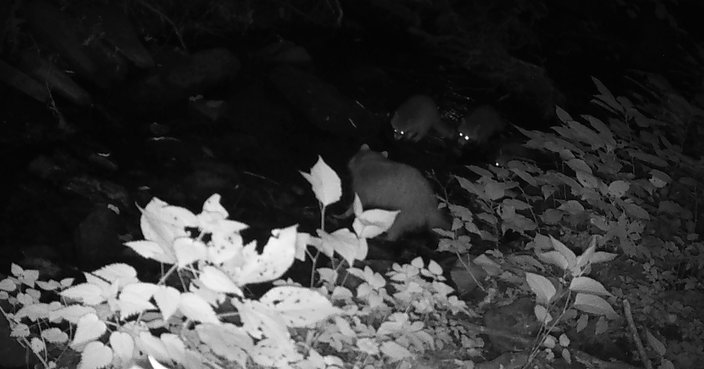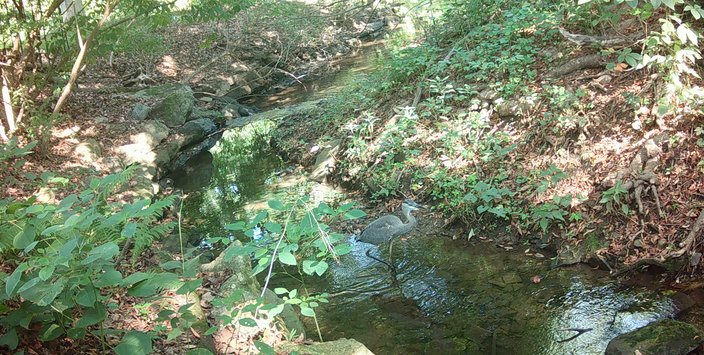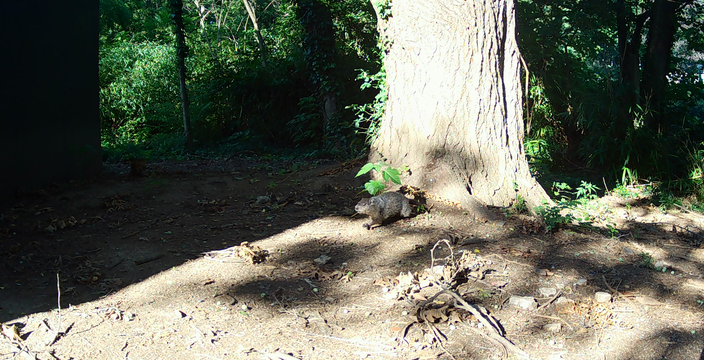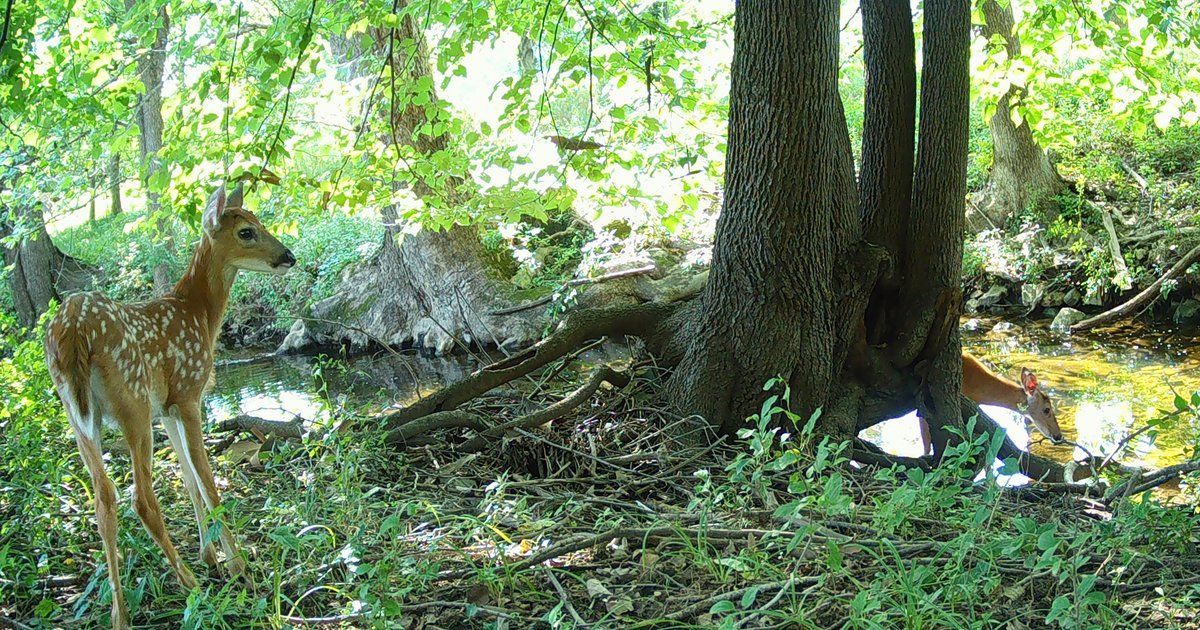In her new project capturing motion-sensor photos of urban wildlife, ecologist and professor Julie Ellis said one of her favorite images is of a mother raccoon facing her three offspring, who are all staring back intently. It made her wonder what kind of conversation must be going on, whether the children are being told to hurry up or are learning how to catch a crayfish.
“It’s those little glimpses into their daily lives that you get from these cameras that I think is really fun, and tells us a lot about what these animals are doing right under our noses,” said Ellis, a director at the University of Pennsylvania School of Veterinary Medicine.
MORE: Montgomery, Bucks and Berks counties are approaching ‘peak’ fall foliage
Ellis and her team are in the process of placing between 30 and 35 cameras at parks, cemeteries, forest preserves, areas along the highway and wildlife habitats around Philadelphia for the Accessing Urban Nature Initiative. The idea is to look at highly developed areas and green spaces to learn how animals adapt to changes in their habitat and how urbanization impacts their day-to-day life.
The motion-triggered cameras can take anywhere from 100 to 600 photos in a two-week period, depending on how active animals are in that area. They’re monitored four times per year to capture seasonal patterns in the behavior of the animals, and Ellis hopes to keep them up and running for five years.
With the photos, Ellis hopes to answer a number of questions about Philadelphia wildlife, including what species are in the area, how they use different types of spaces and how they respond to extreme heat. She’s also hoping to learn how things like bright lights and loud noises can affect breeding behaviors, habitats and other activity.
That information, she said, will hopefully help scientists understand why some species thrive more in cities and how wildlife is responding to rapid environmental changes.
“The idea here amongst all of us is to understand the wildlife that shares our cities with us,” Ellis said. “So with the idea of capturing images of animals living throughout cities, like in parks and cemeteries and neighborhoods, and how they use those spaces, it tells us something about how wildlife adapts to city life.” 
Penn professor Julie Ellis’ favorite photo from her new project.

A heron on the move in a Philadelphia creek.

A groundhog outside his home in Northwest Philadelphia.
While all the cameras haven’t been placed yet, so far they’ve captured foxes, raccoons, skunks, opossum, songbirds, groundhogs, a heron, a mink, and more small birds and mammals. One camera was unintentionally set near a groundhog den and captured hundreds of images of the animal moving in and around his home.
The project is in partnership with the Wildlife Information Network, an alliance of scientists that represents urban regions and cities around the world. Closer to home, the team will also work with local partners such as W.B. Saul High School of Agricultural Sciences, the Philadelphia Zoo, the Elmwood Park Zoo, the Morris Arboretum, the Schuylkill Center for Environmental Education and the John Heinz National Wildlife Refuge to place cameras and monitor the images.
For Ellis, this project comes at a particularly unique time of massive urbanization. By 2050, the United Nations predicts that 2 out of every 3 people will be living in cities globally, which could have a massive impact on wildlife due to habitat destruction and changing environments.
“Why is it that some wildlife seem to survive and in some cases thrive in conditions of urbanizations whereas others really struggle, and what can we learn in Philadelphia about those patterns that might be able to inform how wildlife and biodiversity respond to environmental change more globally?” Ellis said. “Urbanization is just this massively rapid and global phenomenon right now, so it’s a really timely moment to be looking at its impacts.”
